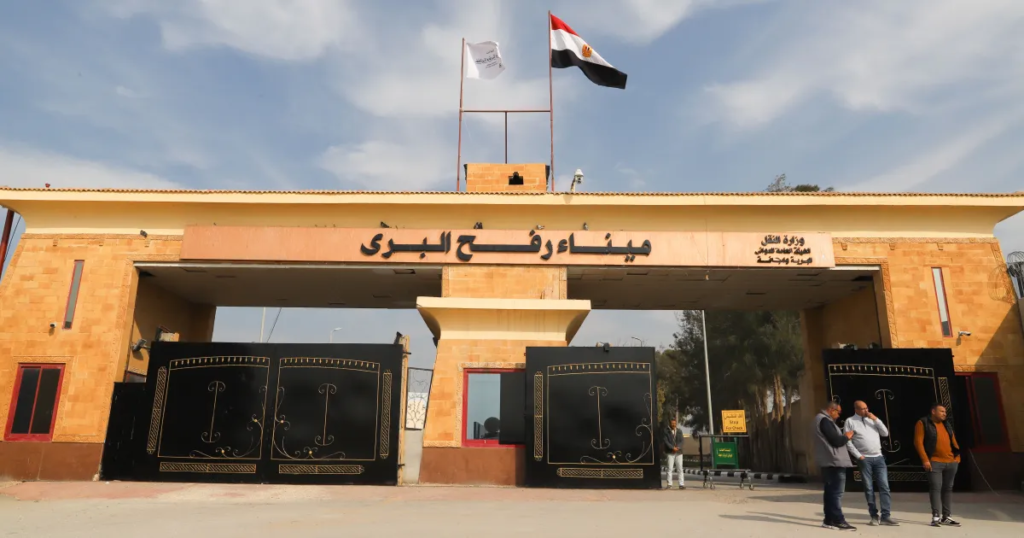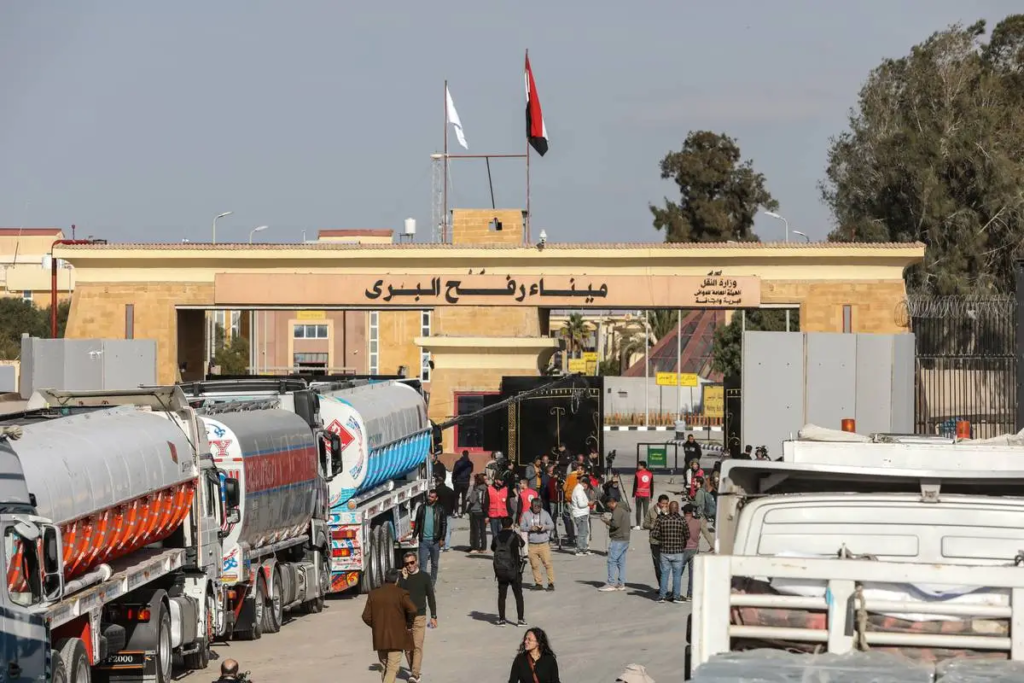The Rafah border crossing, a vital passage between Gaza and Egypt, has reopened after being closed for eight months following Israeli control of the Gaza side in May 2023.
The reopening comes as part of a ceasefire agreement between Israel and Hamas, allowing for the evacuation of sick and wounded Palestinians who have been waiting desperately for medical treatment.
The Plight of Patients in Gaza
For months, thousands of Palestinians in Gaza have been struggling without access to essential medical care due to the closure of the Rafah crossing. The World Health Organization (WHO) estimates that around 14,000 people in Gaza urgently need medical treatment that is unavailable within the besieged enclave.
Many of these patients have severe war-related injuries, such as amputations, burns, and spinal damage, while others suffer from chronic diseases that require specialized care.
Among those who have finally been evacuated is Moatasem Billah Rami Nabil Sammour, a young boy suffering from a rare autoimmune disease. His mother, Mai Khader Abdul Ghani, expressed relief that her son’s name was included in the list for medical referrals to Egypt.
Moatasem had been in severe pain for months, experiencing difficulty moving, eating, and drinking. “Thank God that his name was included in the referral for treatment. I hope that his suffering comes to an end after receiving the appropriate treatment,” she said.
Read : 3-Week-Old Baby Froze to Death in Gaza as Israel and Hamas Trade Accusations of Ceasefire Delays
Another evacuee, Lara Abu Jalala, suffered severe injuries in an airstrike that killed her parents and brothers. One of her feet was so badly damaged that doctors had to amputate it, while the other still requires extensive treatment.
Fifty sick and wounded Palestinian children have crossed into Egypt for treatment as the Rafah border reopens for the first time in nine months following Israel’s agreement after Hamas released the last living female hostages.https://t.co/ArhaQ5aqPZ pic.twitter.com/MI1jYAjGIn
— Sky News (@SkyNews) February 1, 2025
Her uncle, Mohammed Abu Jalala, shared their painful ordeal, explaining how they had tried to save her foot but ultimately had no choice but to remove it due to gangrene.
The Evacuation Process and International Support
The reopening of the Rafah border has been a slow and carefully managed process. WHO’s representative for the West Bank and Gaza, Dr. Rik Peeperkorn, described the evacuation as “orderly but slow,” with ambulances transporting non-walking patients first, followed by those who can walk. Each patient undergoes checks before being transferred to the Egyptian side, where they receive further medical care.
This process is being closely monitored by international organizations, including the European Union. Kaja Kallas, the EU’s foreign policy chief, announced that the bloc had deployed a monitoring mission at the crossing to support Palestinian border personnel and facilitate the transfer of those in need of medical care.

The mission aims to ensure that the evacuation process runs smoothly and that more patients can receive the treatment they desperately require. The Rafah crossing is the only border post connecting Gaza to Egypt, making it a crucial route for medical evacuations, humanitarian aid, and essential supplies.
Its closure had exacerbated the already dire health crisis in Gaza, where hospitals are overwhelmed and severely under-equipped due to ongoing conflict and blockades. The reopening of the crossing has provided a glimmer of hope for those in urgent need, but many more still await permission to leave for treatment.
The Ongoing Conflict and Ceasefire Developments
The reopening of the Rafah border comes amid a temporary ceasefire between Israel and Hamas, which has facilitated the exchange of hostages and prisoners.
Since the ceasefire began on January 19, Israel and Hamas have conducted multiple rounds of exchanges. In the most recent swap, Israel released 183 Palestinian prisoners in exchange for three Israeli hostages: Yarden Bibas, Ofer Kalderon, and Keith Siegel.
The ceasefire follows months of intense fighting that erupted after Hamas launched a deadly attack on Israel on October 7, 2023, killing approximately 1,200 people and taking 251 hostages.

In response, Israel launched a large-scale military offensive in Gaza, which has led to the deaths of over 47,000 Palestinians, according to the Hamas-run health ministry. The humanitarian crisis has worsened as infrastructure has been destroyed, medical facilities have collapsed, and access to food, water, and essential services has become increasingly limited.
Despite the temporary truce, tensions remain high, and the future of the ceasefire is uncertain. The reopening of the Rafah crossing marks a significant step in easing the humanitarian crisis, but it does not resolve the broader conflict. Many Palestinians still live under constant fear, while efforts to negotiate a lasting peace remain fragile.
As more patients are evacuated for urgent medical care, international attention remains focused on Gaza’s humanitarian crisis. Organizations like the WHO, the Red Crescent, and the United Nations continue to call for sustained access to aid, medical evacuations, and a long-term solution to the ongoing conflict.
The reopening of the Rafah crossing is a step in the right direction, but for thousands still trapped in Gaza, the road to recovery remains long and uncertain.

